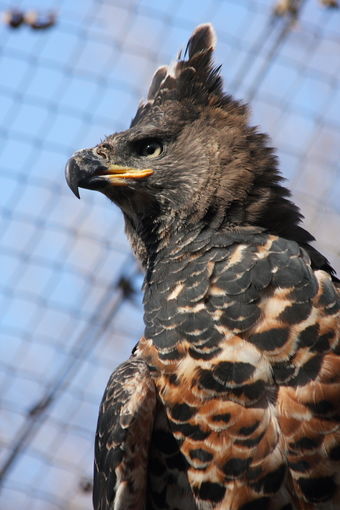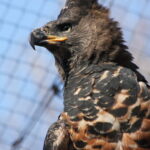Crowned Eagles are majestic birds of prey found in the forests and woodlands of Africa. While it may not be feasible to attract these protected species for hunting or breeding purposes, there are ways to create a habitat that could potentially draw them to your property. In this comprehensive guide, we’ll explore the key factors to consider when trying to attract Crowned Eagles.
Understanding Crowned Eagles’ Habitat and Behavior
Crowned Eagles are known for their impressive size, with a wingspan that can reach up to 2 meters. These birds of prey primarily feed on medium-sized mammals, such as hares, springhares, and monkeys. They are skilled hunters, using their powerful talons and sharp beaks to capture their prey.
Crowned Eagles are typically found in forested areas and woodland savannas, where they can easily spot and ambush their prey from the treetops. They are known for their unique hunting techniques, which involve blind approaches and using the contours of the land and tree trunks to conceal their attacks.
Creating a Suitable Habitat
To attract Crowned Eagles to your property, you’ll need to create an environment that closely resembles their natural habitat. Here are some key elements to consider:
Tall Trees
Crowned Eagles prefer to nest and perch in tall, mature trees, such as Acacia, Combretum, and Terminalia species. Ensure that your property has a good mix of these tree species, with some reaching heights of 15-20 meters or more.
Diverse Prey Population
Crowned Eagles feed on a variety of medium-sized mammals, so it’s important to have a healthy population of potential prey animals on your property. This may include hares, springhares, monkeys, and other small to medium-sized mammals.
Minimal Human Disturbance
Crowned Eagles are sensitive to human activity and prefer areas with minimal disturbance. Try to maintain a buffer zone around your property, limiting access and keeping human activity to a minimum.
Water Sources
Crowned Eagles need access to reliable water sources, such as streams, rivers, or artificial ponds. Ensure that your property has at least one permanent water source that the eagles can use for drinking and bathing.
Nesting Sites
Crowned Eagles build large, stick nests high up in the canopy of tall trees. Identify suitable nesting sites on your property and consider leaving them undisturbed to encourage the eagles to settle.
Encouraging Prey Species
To attract Crowned Eagles, you’ll need to ensure that your property has a healthy population of their preferred prey. Here are some tips to encourage the presence of small to medium-sized mammals:
Habitat Management
Maintain a diverse mix of vegetation, including both open areas and dense thickets, to provide suitable cover and foraging opportunities for prey species.
Predator Control
Consider implementing humane predator control measures to protect the prey population from natural predators, such as smaller carnivores.
Water Sources
Ensure that your property has multiple water sources, such as ponds, streams, or artificial watering holes, to support the prey population.
Supplementary Feeding
If necessary, you can consider providing supplementary feeding for the prey species to help sustain their population.
Ethical Considerations
It’s important to note that while you can create a habitat that may attract Crowned Eagles, it is illegal and unethical to attempt to hunt or capture these protected birds of prey. Crowned Eagles are listed as a protected species in many countries, and any interference with their natural behavior or population could have serious consequences.
If you do observe Crowned Eagles on your property, it’s best to enjoy their presence from a distance and avoid any actions that could disturb or harm them.
Conclusion
Attracting Crowned Eagles to your property can be a rewarding and fascinating endeavor, but it requires a deep understanding of their habitat requirements and a commitment to creating a safe and undisturbed environment. By following the guidelines outlined in this article, you can take steps to encourage the presence of these majestic birds of prey on your land, while always prioritizing their well-being and the ethical considerations involved.
Remember, the key to successfully attracting Crowned Eagles is to mimic their natural habitat as closely as possible, while respecting their protected status and avoiding any actions that could harm them or their prey. With patience and dedication, you may be able to catch a glimpse of these magnificent birds soaring over your property.


